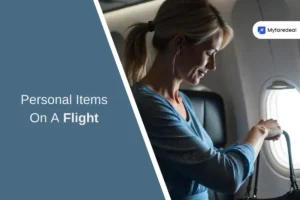
Connecting flights are an essential part of global air travel networks, especially when travellers have no direct routes to their destinations. A connecting flight needs you to switch planes at an intermediate airport before reaching your final destination. Meanwhile, these arrangements include layovers that can last anywhere from 30 minutes to several hours. Stays over 24 hours become stopovers. Knowing these details helps make your experience smooth and worry-free. However, with the proper information, What might look like travel hassles can become chances to save money and explore new places.
What Is Connecting Flights And Its Type?
Connecting flights are a great way to get savings if you’re watching your budget. They cost less than direct flights and give you more choices for when to leave and arrive. These flights let you pick from many different schedules, which works great if your plans are flexible. Meanwhile, there are two main types of connecting flights:
- Airline-Protected Transfers: One ticket covers your whole experience. The airline moves your bags to your final destination and helps if delays make you miss connections.
- Self-Transfers: You book separate flights, often with different airlines. This means you’ll need to get and recheck your bags at each stop. Missing connections becomes your responsibility.
The cost savings aren’t the only benefit. Additionally, the layovers let the travellers explore new places along the way. Many travellers choose longer layovers on purpose. However, this clever strategy turns quick stops into mini-adventures – you get to see two places for one ticket price. These flights help you reach places that don’t have direct service from your city. Meanwhile, travel times are longer and coordination can be tricky.
Do Connecting Flights Need A Transit Visa?
A transit visa allows travellers to pass through a country and route to their final destination, particularly for connecting flights, but it’s not for extended stays or sightseeing. Meanwhile, A transit visa is required for layovers over 24 hours, even if travellers stay at the airport. However, the transit visa is required in various countries including the United States, the United Kingdom, China, Australia and Canada. Additionally, the transit visa might vary depending on different countries. Requirements change based on your nationality and whether you leave the airport.
How Do Connecting Flights Work?
The Connecting flight process starts the moment the flight arrives at the airport. Meanwhile, most airports globally have 10-year-old Minimum Connection Times (MCTs). However, these represent the shortest time needed for passengers and baggage to catch their connecting flights. Airport layout, security requirements, and flight types (domestic or international) determine these MCTs.
Purple Flight Connections signs will point you through the transfer process after landing. The travellers will usually get their onward flight’s boarding pass during their original check-in if they have airline-protected connections. Additionally, this saves the passengers from checking in again.
What Happens If A Connecting Flight Is Delayed?
A delayed incoming flight might make you miss your connection. The airline’s response depends on your booking type. Meanwhile, the airline-protected transfers offer the passengers automatic rebooking on the next available flight at no cost. However, self-transfers with different airlines leave the travellers responsible for rebooking and costs.
Airlines coordinate these connections using complex data sets with multiple variables. Missed connections cost airlines unexpectedly, especially with multiple travellers or high-value customers. However, airlines review their MCTs regularly to balance competitive advantage and operational reliability.
Special Assistance During Connecting Flights
Special needs travellers face unique challenges during complex flight connections. Airports and airlines worldwide provide dedicated assistance services. These services need booking at least 48 hours before departure. Meanwhile, the airlines offer complete support services for unaccompanied minors during connections. Therefore, children can wait safely under supervision in special lounges maintained by major airlines.
For example, American Airlines has kids-only lounges in hub cities like Charlotte, Dallas, New York, Los Angeles, and Chicago. Meanwhile, KLM and Air France’s designated lounges cater to children with long transfers.
Regulations protect disabled passengers’ accessibility throughout their trip. The assistance includes:
- Help to move through departure and arrival airports
- Support boarding and disembarking aircraft
- Significant assistance during flight connections
- Wheelchair users can get their chairs delivered from the baggage hold to the aircraft door at connecting airports. Notwithstanding that, this needs proper notification and extra time because electric wheelchairs require battery deactivation/reactivation between flights.
Airlines must assist elderly travellers with boarding, deplaning and flight connections. Meanwhile, cabin crew cannot help with personal care needs like feeding, medication, or lavatory assistance. However, dedicated airport staff guides seniors through connection processes. Whereas, airport assistance staff helps passengers through mandatory security screening at major connecting hubs. Smooth connections depend on clear communication of needs during booking. Passengers should explain their assistance requirements and mobility equipment details.
Important Note: Special assistance comes free but needs advance booking – typically 48-72 hours before travel. Missing this pre-booking window could cause major delays or missed connections.
Navigating Your Connection Successfully
Making smooth connections takes strategic planning from booking to boarding. You should avoid booking tight connections. A 30-minute domestic connection might look good on paper, but seasoned travellers suggest 60-90 minutes for domestic and 90 minutes to two hours for international transfers. This extra time helps handle unexpected delays.
Smart booking strategies can make your experience smoother:
- Choose aisle seats near the front of the aircraft to exit quickly upon landing
- Skip checking bags to avoid baggage claim delays and consider taking carry-on bags.
- Book flights earlier in the day before delays pile up
- Avoid delay-prone airports like Paris Charles de Gaulle, Chicago O’Hare, and New York JFK
- Download your connecting hub’s airport map before boarding your first flight. This helps you learn the terminal layout. Flight attendants often help passengers with tight connections – let them know about yours and they might help you deplane earlier.
However, airport lounges are a great way to get comfort during longer waits. Meanwhile, they usually offer free food, Wi-Fi, and sometimes shower facilities. Whereas, long layovers give you time to write about your trip or research your next destination. Leaving the airport during extended stops sounds tempting but requires going through immigration and security again. This takes substantially more time and might require transit visas based on your nationality.
If the passengers miss a connection on an airline-protected ticket, they can contact the airline immediately. Additionally, the airline must rebook you on the next available flight without extra charges.
Conclusion
Connecting flights bridge the gap to countless destinations worldwide when direct routes aren’t available. These travel arrangements need careful planning, but knowing the basics helps create stress-free experiences. Meanwhile, by understanding different types of connections, visa rules, and best practices, travellers can ensure a smooth and stress-free journey.







